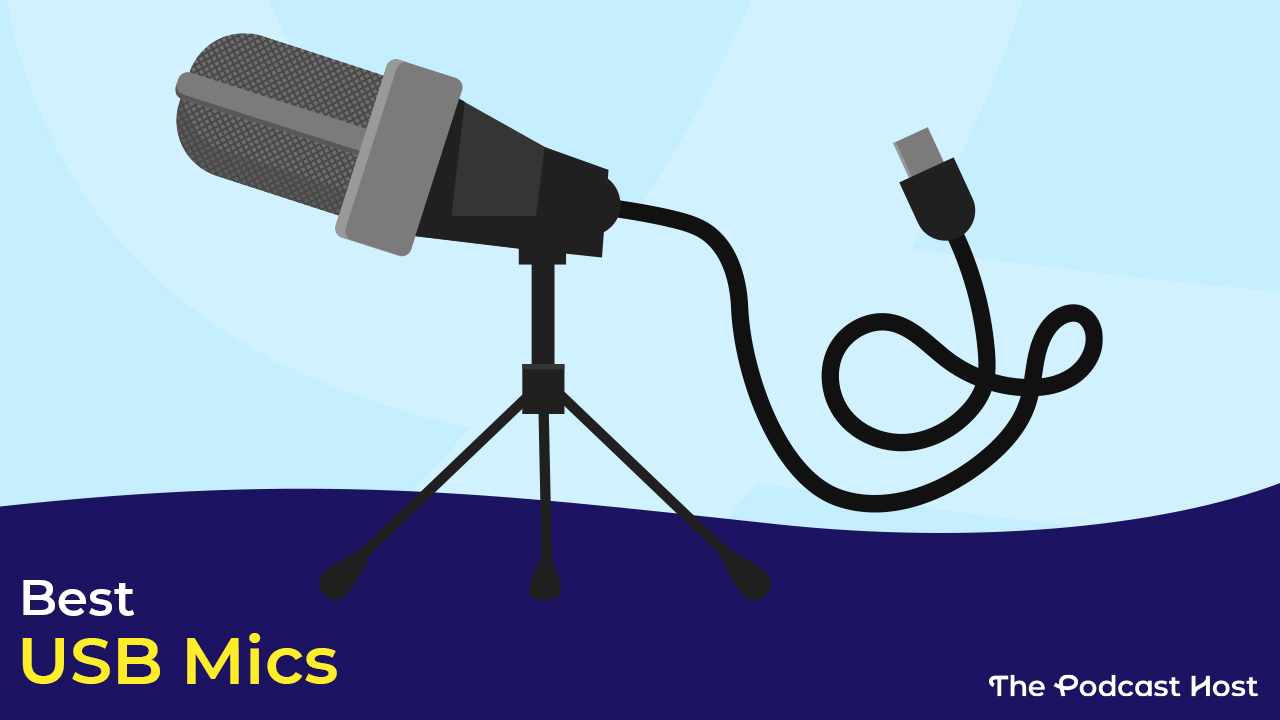Best USB Mics for Podcasts: At-a-Glance
- A USB mic is simple to use. Just plug it in, and you’re ready to roll.
- They’re often seen as a “beginner” option. But the quality of USB mics has increased drastically in recent years.
- There are a lot of USB mics on the market. The best option for you will depend on a few different factors.
- For best value, it’s hard to see past the Samson Q2U or the ATR2100.
- Audio quality-wise, the AKG Lyra and Rode Podcaster sound superb.
- The Samson Satellite and Shure MV5 are USB mics you can also plug straight into your iPhone.
- And the AntLion ModMic USB can turn your existing headphones into a quality headset mic.
- Read on to find out more about the pros, cons, and pricing of each one…
Table of Contents
USB, digital, or “plug and play” mics are popular recording choices in the world of podcasting. After all, most people start a podcast, not because they want to learn about audio equipment and sound recording, but because they have something to say.
You don’t need to be a sound engineer to record good sounding audio into your computer nowadays. You can have most USB mics unboxed, set up, plugged in and ready to go in about a minute. The quality can even be good enough that we include a couple in our flagship ‘Best Podcasting Microphones‘ roundup.
But, if you’re already sold on the idea of getting a USB mic, how do you know which make or model to go for? There’s a lot of choice out there.
The good news is that we’ve already used most of them here at The Podcast Host, so we can provide you with the essential details to help you make up your own mind.
One thing I’ll be talking about here is microphone “polar patterns”. If you’ve no idea what this means, don’t worry. Here’s a guide to polar patterns, and why they matter.
Dynamic & Condenser USB Microphones
Another thing that I’ll be mentioning is whether the mics are “dynamic” or “condenser”. This relates to the way a mic is built, and how it functions.
To drastically simplify this, dynamic mics are a bit less sensitive, but reject more unwanted noise from the environment. On the other hand, condenser mics being more sensitive mean they can capture a more nuanced vocal performance, but also be susceptible to such unwanted noise.
Why Mention Headphones?
Some USB mics come with a headphone jack, which means you can plug a pair of earbuds directly into the mic and monitor yourself when you’re recording.
Monitoring your recordings is good practice because you’ll hear exactly what’s being recorded, as it’s recording. This way, you can immediately identify issues like distortion or poor mic technique, and correct them there and then. The alternative can be to finish an hour long episode, listen back to it, and realise that it sounds terrible.
Best USB Condenser Mics
Most USB microphones are condensers, because they’re predominately designed for vocals. Here are your options…
AKG Lyra
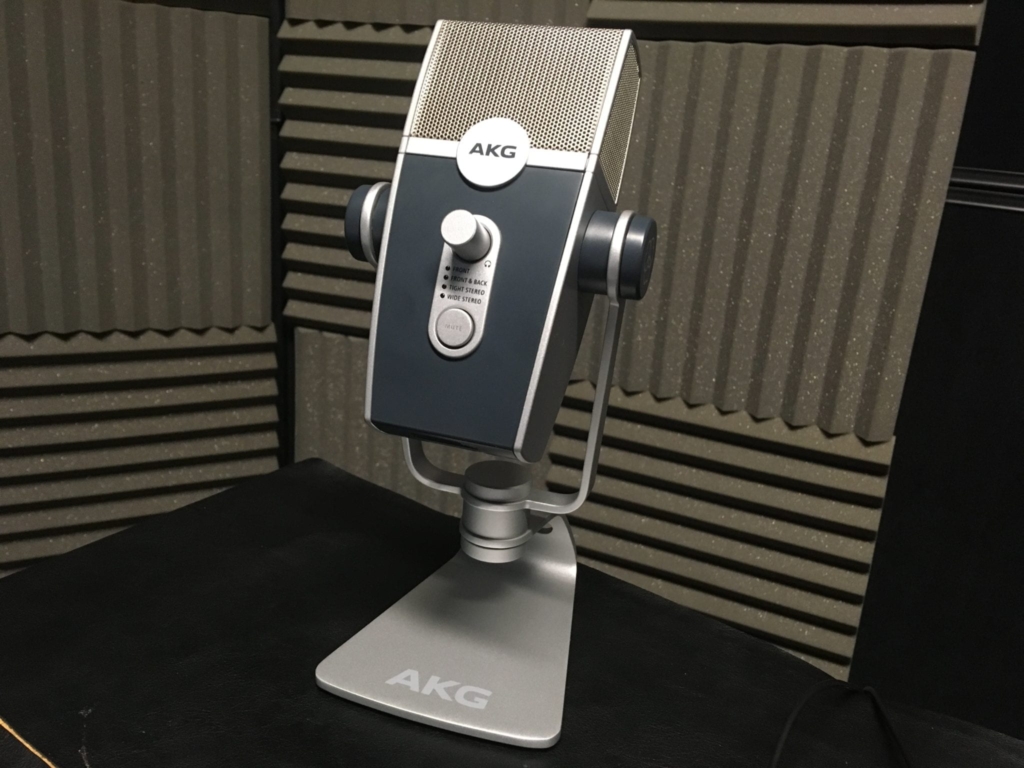
- Price – £145/$150
- Headphone Port – Yes
- Polar Patterns – Front, Front & Back, Tight Stereo and Wide Stereo
- Function – Condenser
- USP – Best overall sound quality
The AKG Lyra is one of the newer USB mics on the scene. And probably the best sounding one you’ll currently find on the market.
With its own desk stand, the mic is ready to use right out of the box. But you can easily remove this and attach it to a more traditional stand or boom arm if need be.
It has 4 different recording patterns, so is flexible in the way it can be used.
One minor irk for me was that the gain button is on the back of the mic, rather than on the front. Other than that though, it’s an exceptional mic that takes USB sound quality to a whole new level.
AntLion ModMic USB
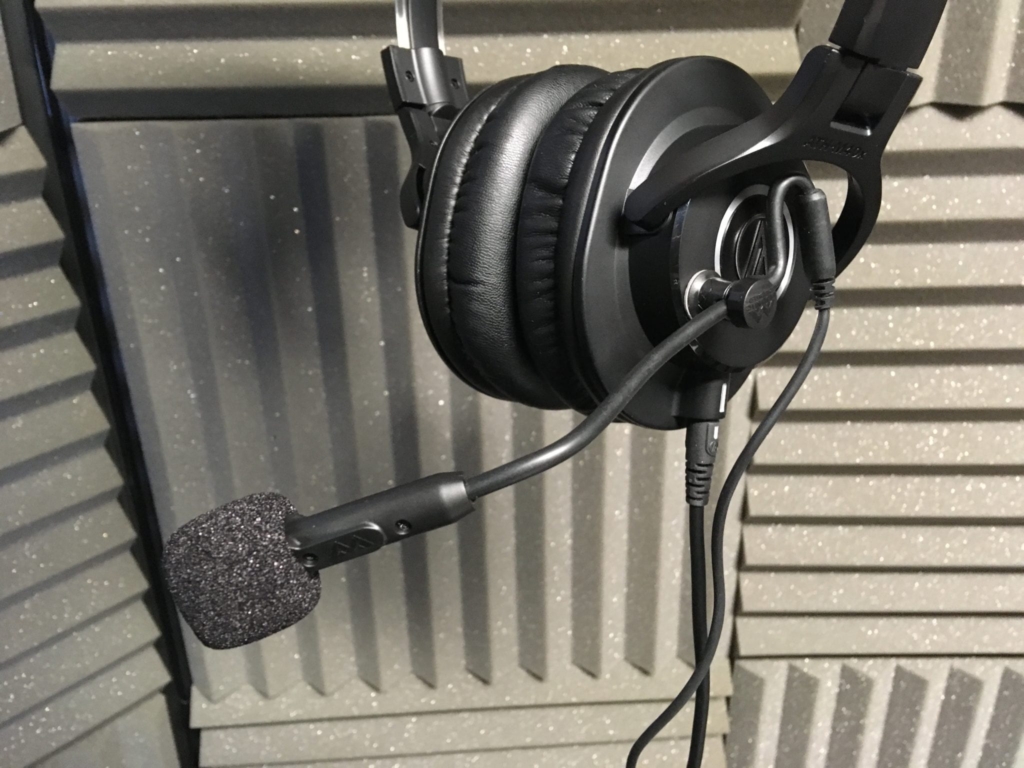
- Price – £80/$70
- Headphone Port – No
- Polar Patterns – Cardioid, Omnidirectional
- Function – Condenser
- USP – Best minimalist option
The AntLion ModMic USB is another newer addition to the USB mic pantheon. And this one is unique because it actually lets you turn your favourite pair of headphones into a headset mic.
Headset mics are ideal for folks with no desk space, boom arm, or mic stand. However, they’re also notorious for their sub-par audio quality.
The ModMic USB bucks that trend by offering great sounding audio, which you can combine with the comfort and familiarity of your own headphones.
The mic has two polar patterns to suit recording in either silent, or noisier environments. It’s a great option for podcasters who do a lot of interviews online, and who lack recording space or a permanent podcasting setup.
For the solo podcaster, it doesn’t offer active monitoring so isn’t really suited to recording lengthy monologues. If that’s you, opt for a model with a headphone port instead.
Rode NT-USB Mini (New Release!)
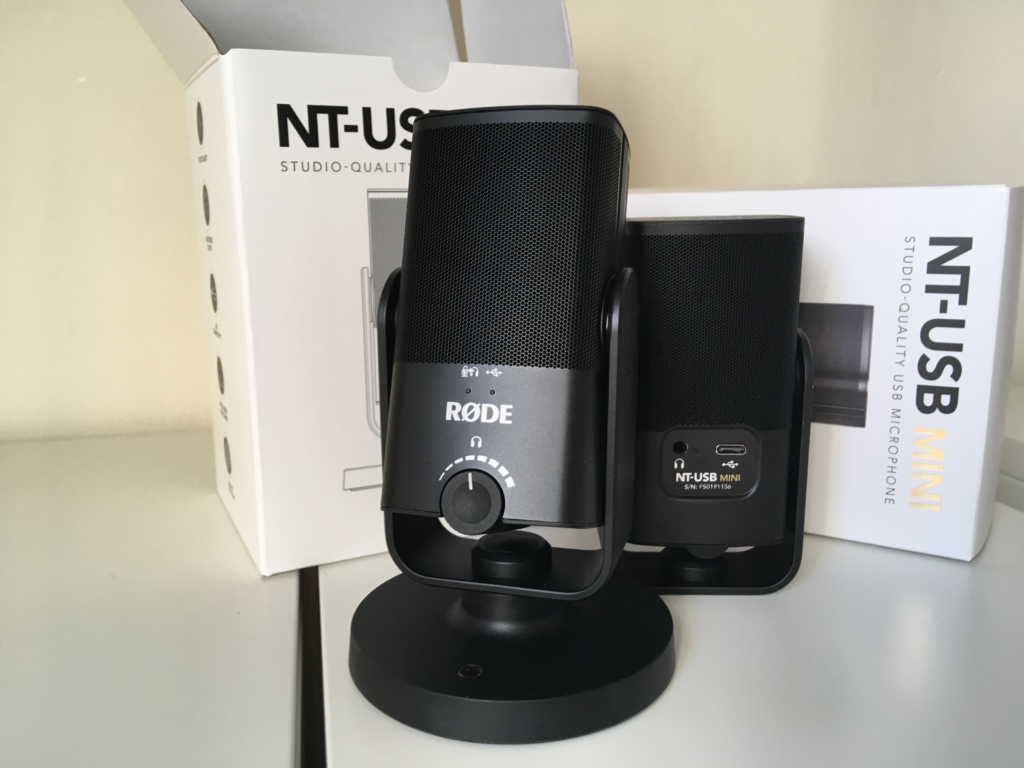
- Price – $99
- Headphone Port – Yes
- Polar Patterns – Cardioid
- Function – Condenser
- USP – Can record multiple USB NT-USB mics into one computer, in multitrack
Rode’s NT-USB Mini is a downsized version of the Rode NT USB, but it has a very unique selling point. You can plug up to 4 of the mics into your computer at the same time and record them, multitrack, via Rode’s free ‘Connect’ software.
Even as a standalone, though, the NT-USB is an excellent value little mic. It picks up the voice well, is robust and weighty, and it even has a magnetised desk stand, too.
For a deeper dive, check out Rode Connect & the Rode NT-USB.
Samson Satellite
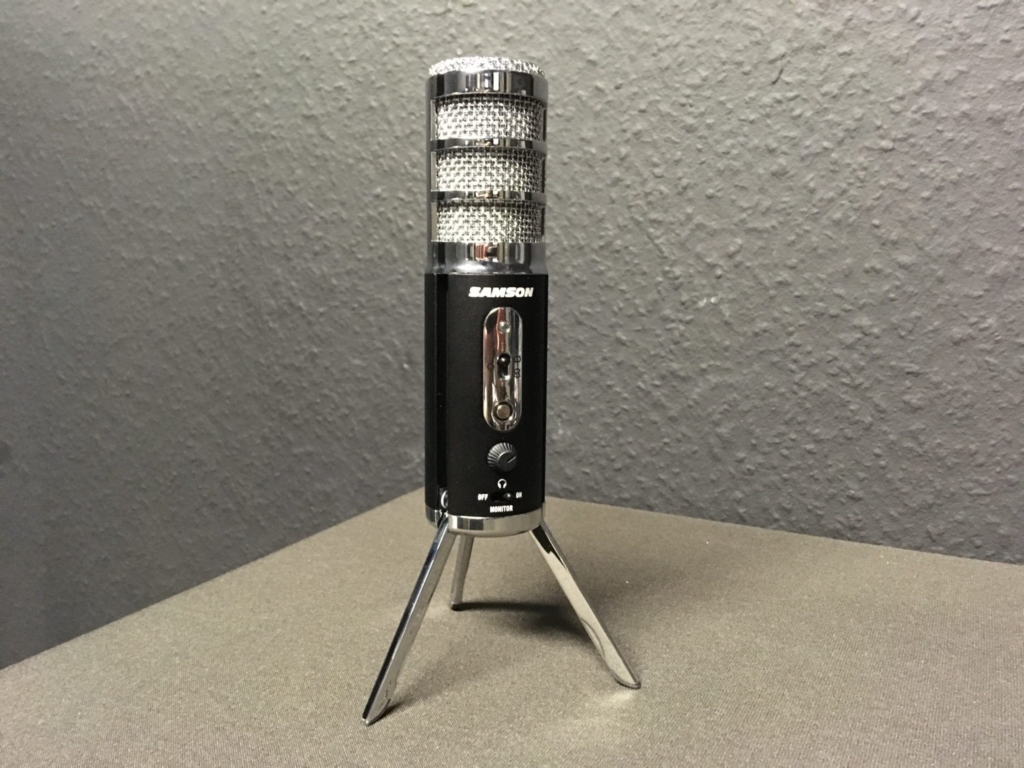
- Price – £105/$99
- Headphone Port – Yes
- Polar Patterns – Cardioid, Omnidirectional, and Bi-Directional
- Function – Condenser
- USP – Records straight into iPhone
The Samson Satellite is another fine USB mic offering from our pals at Samson.
Not only is it an excellent sounding USB mic, it also works directly into the iPhone too.
The Satellite is mounted on its own built-in tripod stand, but can also easily be set up to use with a boom arm or mic stand.
Its touch-control mute button is a nice feature, as it doesn’t pop or click your audio when toggled during a recording session.
Multiple polar patterns mean the option to use the mic for solo, interview, or roundtable discussion purposes too.
Blue Snowball
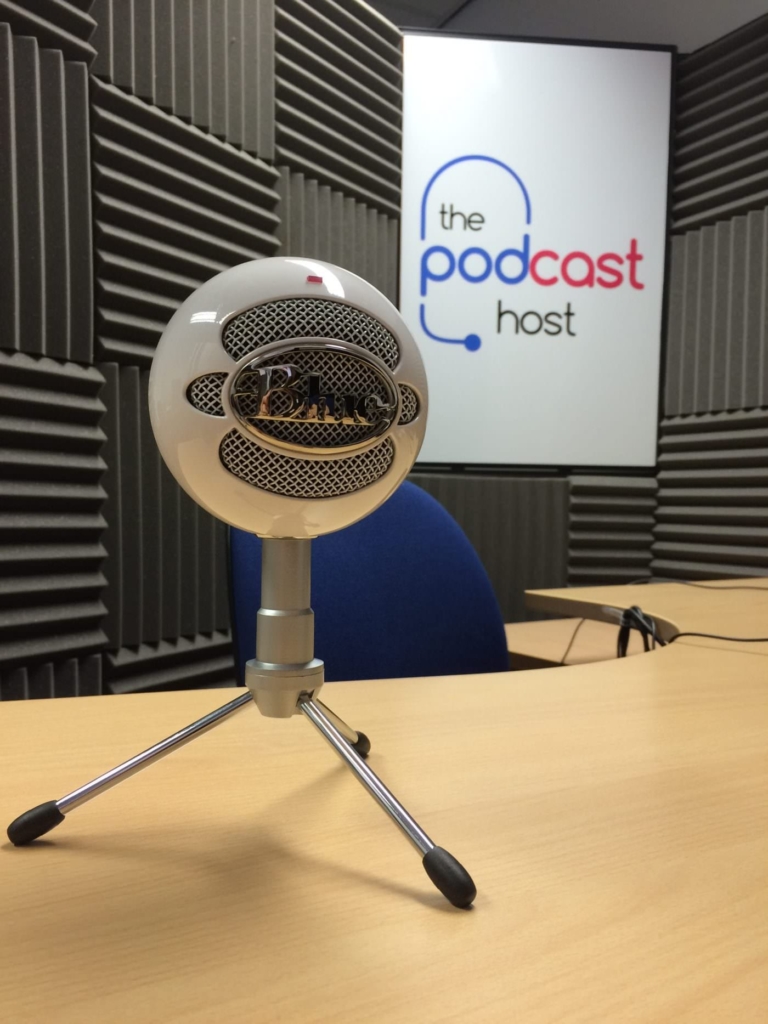
- Price – £50/$60
- Headphone Port – No
- Regular Snowball Polar Patterns – Cardioid, Omnidirectional
- Snowball iCE Polar Pattern – Cardioid
- Function – Condenser
The Blue Snowball comes in two forms; the regular Snowball, and the Snowball iCE.
The regular Snowball is what Blue refers to as the “professional quality option”, whilst the iCE is marketed as basic quality.
The Snowball is a great looking mic, which is well built, and comes on it’s own stand. It probably has the lowest quality sound out of the other mics listed here, but nevertheless, it can be a decent starter option if you’re a bit intimidated at the thought of operating a microphone.
My main gripe with the Snowball is that it doesn’t have a headphone port, so you can’t monitor your audio as you record. You can only hear what the recording sounds like once you’ve finished, and listen back to it.
The mic is also sensitive to plosives, so it can be easy to ‘pop’ your way through an entire recording, and know nothing about it until you load it up for editing.
Blue Yeti
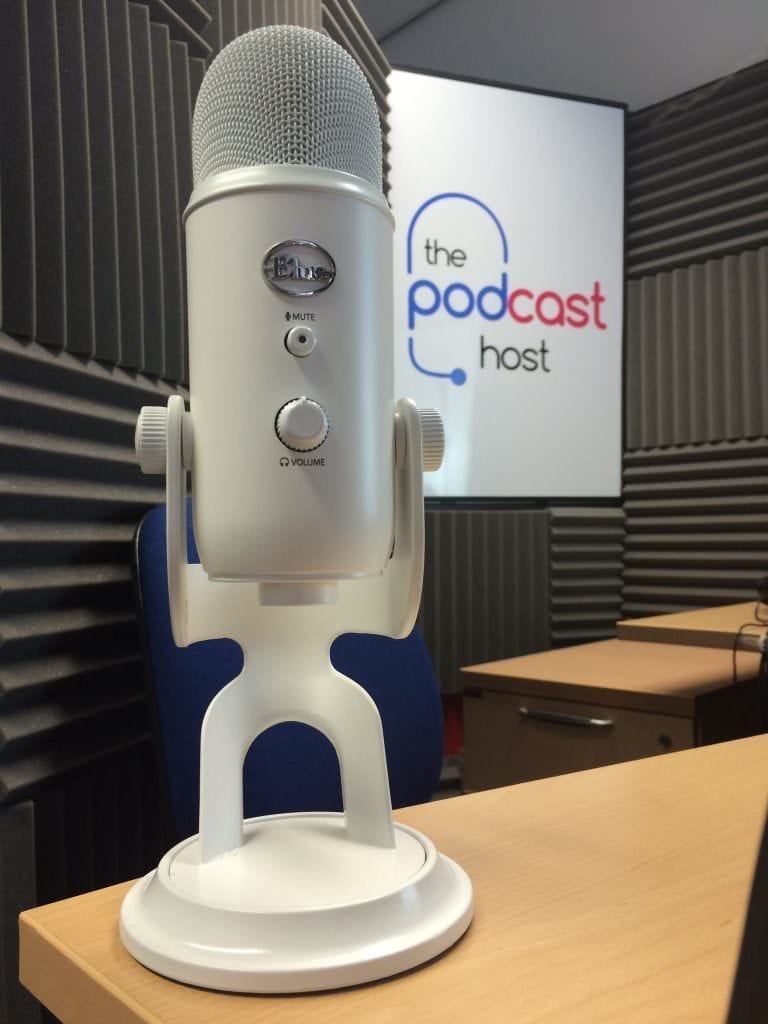
- Price – £100/$125
- Headphone Port – Yes
- Polar Patterns – Cardioid, Stereo, Omnidirectional, Bi-directional
- Function – Condenser
Perhaps the most popular podcasting mic on the planet. The Blue Yeti is essentially the Snowball’s big brother. It has more features, weighs more, sounds better, and costs more.
A running theme with Blue is how accessible they make their gear. The Yeti, like the Snowball, is a good looking mic that won’t intimidate the absolute beginner.
The Yeti has a few different ‘polar pattern’ options which determines where it picks up sound from. Set it to ‘bi-directional’ and you can record an interview or co-hosted show with someone sitting at either side of the mic.
Set it to ‘omnidirectional’ and you can gather a few people round a table and record a discussion style episode.
Or, leave it on ‘cardioid’ if you just want to talk into the mic on your own.
In my opinion, only the cardiod option sounds good, and the other polar patterns can sound roomy and distant. I’d only recommend getting one if you’re using it as a solo mic.
Samson Meteor

- Price – $69/£46
- Headphone Port – Yes
- Polar Pattern – Cardioid
- Function – Condenser
The Samson Meteor is Samson’s trendy looking little USB condenser mic.
It has a better sound quality than the Blue Snowball, and is cheaper than the Blue Yeti. It’s also more light and portable than both.
Like any condenser mic, recording environment is a big factor towards how well it’ll serve you.
If you’re mainly going to record in places where there’s a lot of unwanted background noise noise, then take a look at the Q2U instead.
If you’re recording in a fairly quiet environment though, this can give you a nice sound.
Its an aesthetically distinctive mic too, so could be an option worth considering if you do a bit of video recording.
Shure MV5
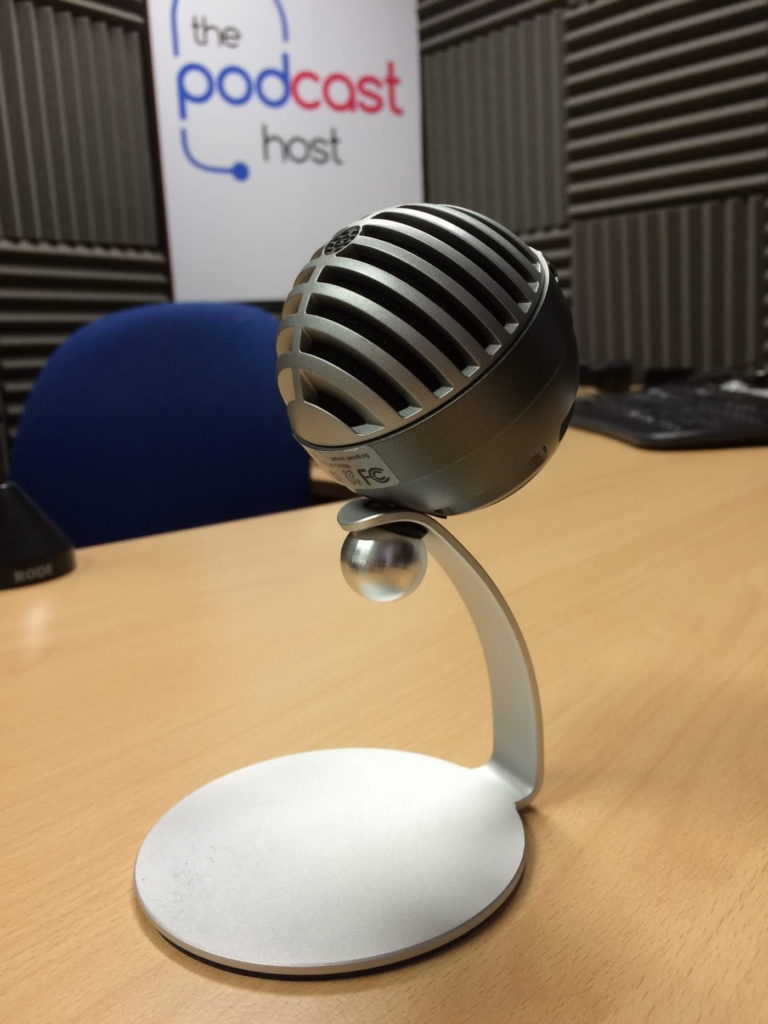
- Price – £100/$100
- Headphone Port – Yes
- Polar Pattern – Cardioid
- Function – Condenser
- USP – Records straight into iPhone
Shure are famous for their legendary musician’s microphones, but they recently entered the digital mic arena with their MOTIV range. The Shure MV5 was one of these mics.
What gives this mic the edge over most of the others mentioned in this roundup so far is that it doubles up as an iPhone mic, without the need for any additional equipment. You can download Shure’s free MOTIV app, which turns your phone into a little recording interface.
The MV5 is extremely small, light, and portable. It’s aesthetically well designed, and comes on its own stand.
Whether you’re using it as a USB mic, or into your iPhone, you’ll get a quality sound from the MV5. It’s a great option for someone who tends to record ‘on the go’ because it’ll barely take up any room in your bag, and can be set up ready to record in seconds.
Best USB Dynamic Mics
If you’d prefer a bit more protection against unwanted external or environmental noise, then either of these mics are a great option.
Samson Q2U or ATR2100
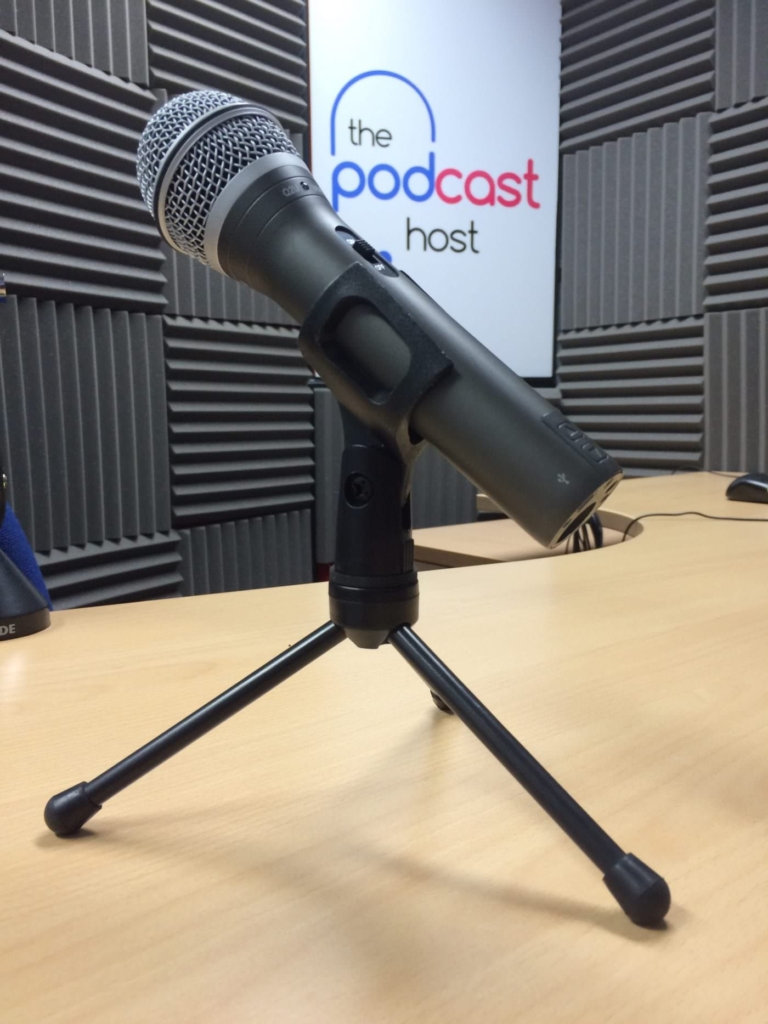
- Samson Q2U Price – $40/£55
- ATR2100 Price – $80/£60
- Headphone Port – Yes
- Polar Pattern – Cardioid
- Function – Dynamic
- USP – Best overall value. Works as both USB and XLR.
I throw these two mics in together because they are virtually identical, and their availability and price both seem to depend on your region.
The Samson Q2U is the mic I recommend to most people who are starting out in podcasting, for a few different reasons.
Aside from it being very well priced, you also get a quality pair of headphones and a mic desk stand included in the standard bundle.
The Q2U and the ATR2100 are also pretty unique because you can use them as USB mics directly into your computer, or as XLR mics into a mixer or digital recorder.
This means that when you feel ready to buy your first mixer or recorder you won’t need to buy a new mic to get it set up and working.
These mics have a ‘cardioid’ polar pattern, which means they are designed to pick up a single voice at one time.
RODE Podcaster
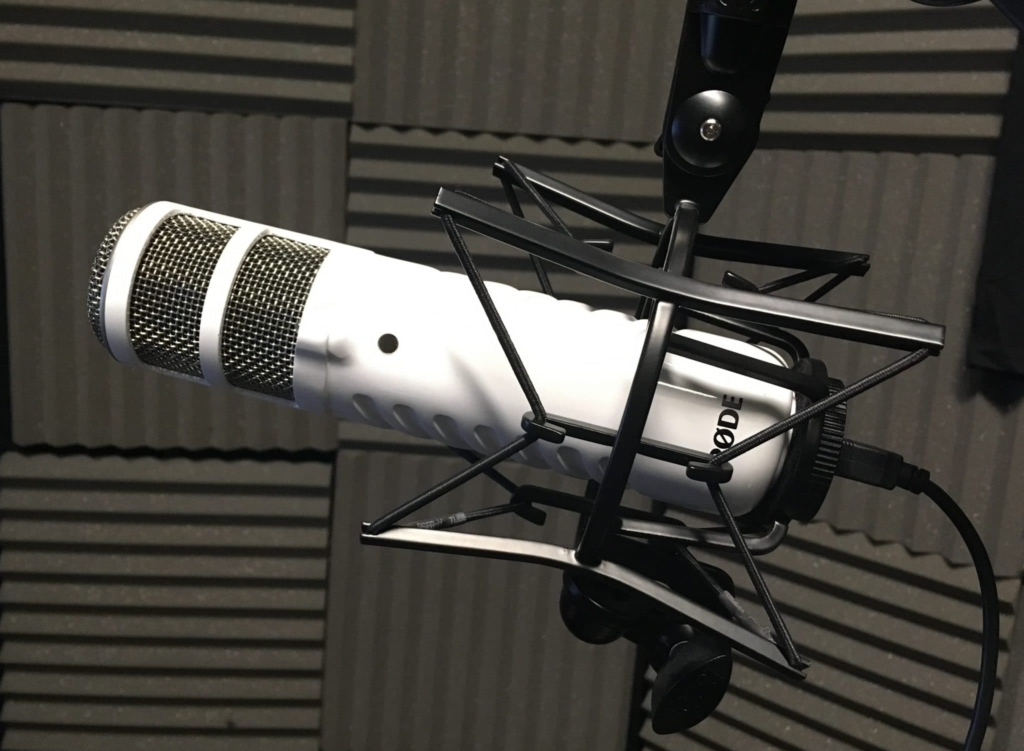
- Price – £145/$225
- Headphone Port – Yes
- Polar Pattern – Cardioid
- Function – Dynamic
Definitely the high-end option in this roundup, the RODE Podcaster is like a USB version of RODE’s popular RODE Procaster mic.
The sound quality is great – it always is with RODE – but it’s a big investment and might be a little above-budget for some.
You’ll also need a boom arm or mic stand to mount it, so it isn’t as flexible as some of the other options here when it comes to portable or ‘on the fly’ recording.
If you’re looking for a premium quality mic though, but would rather stay with USB as opposed to getting a mixer or preamp, then the RODE Podcaster could be for you.
Shure MV7 (New Release!)
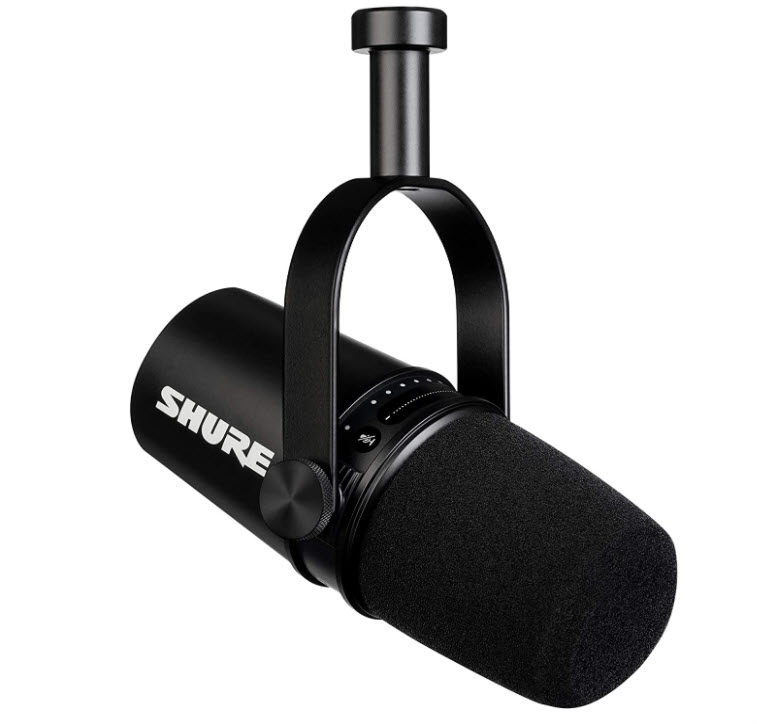
- Price – $250
- Headphone Port – Yes
- Polar Pattern – Cardioid
- Function – Dynamic
Shure’s SM7B has always been one of the most popular mics in podcasting. Maybe that’s because Joe Rogan uses one, or maybe it’s simply because sounds and performs well. Perhaps it’s a bit of both. In any case, this famous mic now has a little brother – the Shure MV7. This mic works in both USB and XLR form, and works hand-in-hand with Shure’s MOTIV app. Shure market this mic as “for perfect recordings in imperfect rooms”. Check out our full review of the Shure MV7 right here.
Samson Q9U (New Release!)
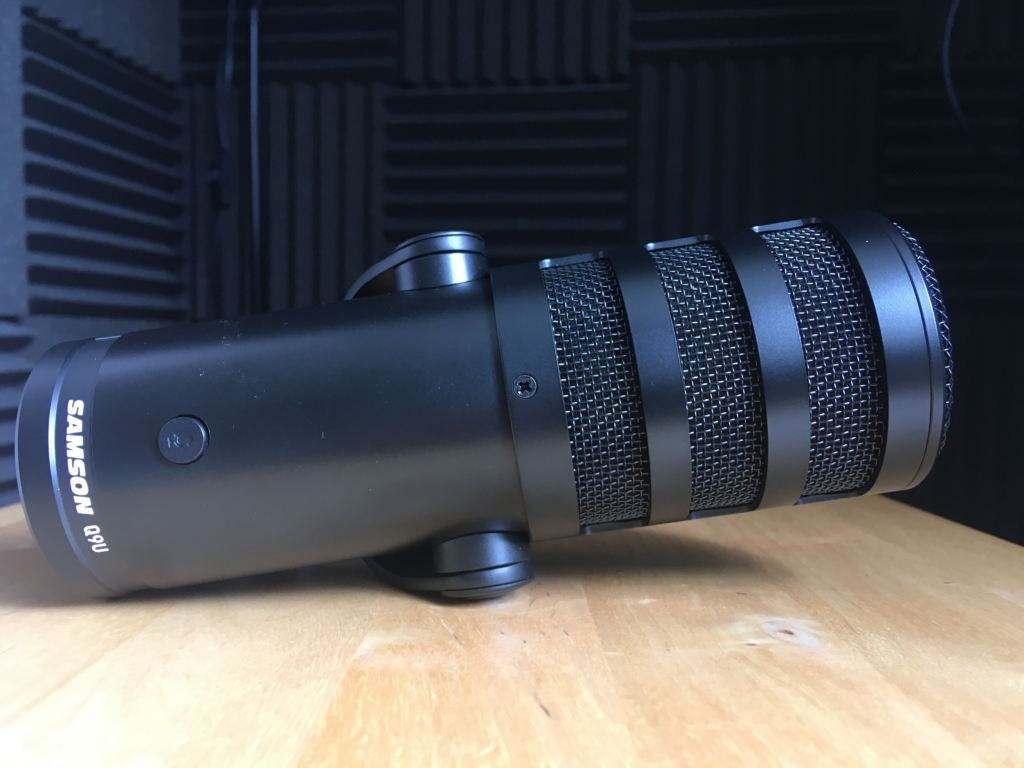
- Price – $200
- Headphone Port – Yes
- Polar Patterns – Cardioid
- Function – Dynamic
Another fantastic effort from Samson, the Q9U shares some similarities with the Q2U (they’re both Dynamic XLR/USB and have a Q and U in their name) but I don’t think it’s designed as a replacement. The Q9U costs a bit more and is definitely in the “high-end vocal mic” category. You’ll find handy settings on the mic itself too – a mid-range button to improve the sound, and a low-cut button to guard against those pesky plosives. Check out our full review of the Samson Q9U right here.
Best USB Mics: Summary
So hopefully that’s helped narrow your choices down a bit in the search for your first (or next) USB mic. We’ll continue to build this guide out as and when we get new kit to try out, and if there’s anything you’d like to see included here, just let us know in the comments section.
The bottom line is that all of these mics are good enough to podcast with. It just depends on how and where you plan to use yours.
Best Overall Value USB Mic
For overall value, I can’t see past the Samson Q2U or the ATR2100. We tend to recommend these to most new podcasters. They are flexible, sound good, and are both very affordable.
Best Sound Quality USB Mic
A toss-up between the AKG Lyra and the RODE Podcaster, though they’re both rivalled by new additions the Shure MV7 and the Samson Q9U. I’d say the Lyra just shades it though. It’s also cheaper, and you don’t need a stand or boom arm to mount it on.
Best Minimalist Option USB Mic
The AntLion Modmic USB is a headset attachment for your existing headphones. It’s easy to carry it around in your bag at all times, and quick to set up.
A mention here also to the Shure MV5 and Samson Satellite, both of which you can connect to your iPhone right out of the box!
Best Multiple USB Mic Option
Recording with multiple USB mics into one computer has always been an elusive and complicated process. Rode changed that with their release of the Rode NT-USB Mini and Rode Connect software.
This setup means you can run up to 4 USB mics into your computer at one time, and record them in multitrack. You can even feed in remote guests from apps such as Skype or Zoom, too!
Alternative Mic Options
If you remain undecided and would like to shop around a little more though, then check out our Best Podcasting Microphones roundup. That isn’t limited to USB mic options, and you might feel that an XLR mic would be a better choice for you going forward. If money is tight, but you don’t want to skimp on quality, then check out our Best Budget Mics roundup, too.
Bonus Resource: Free Online Mic Test
Need More Help Choosing Podcast Equipment?
If you need some more tailored advice for your own setup, or want help with any other aspect of podcasting, then why not take a look at Podcraft Academy
There, you’ll get access to all of our video courses, tutorials, ebooks, and downloadable resources. On top of that, we run weekly live Q&A sessions where you can get all your questions answered on an ongoing basis!
